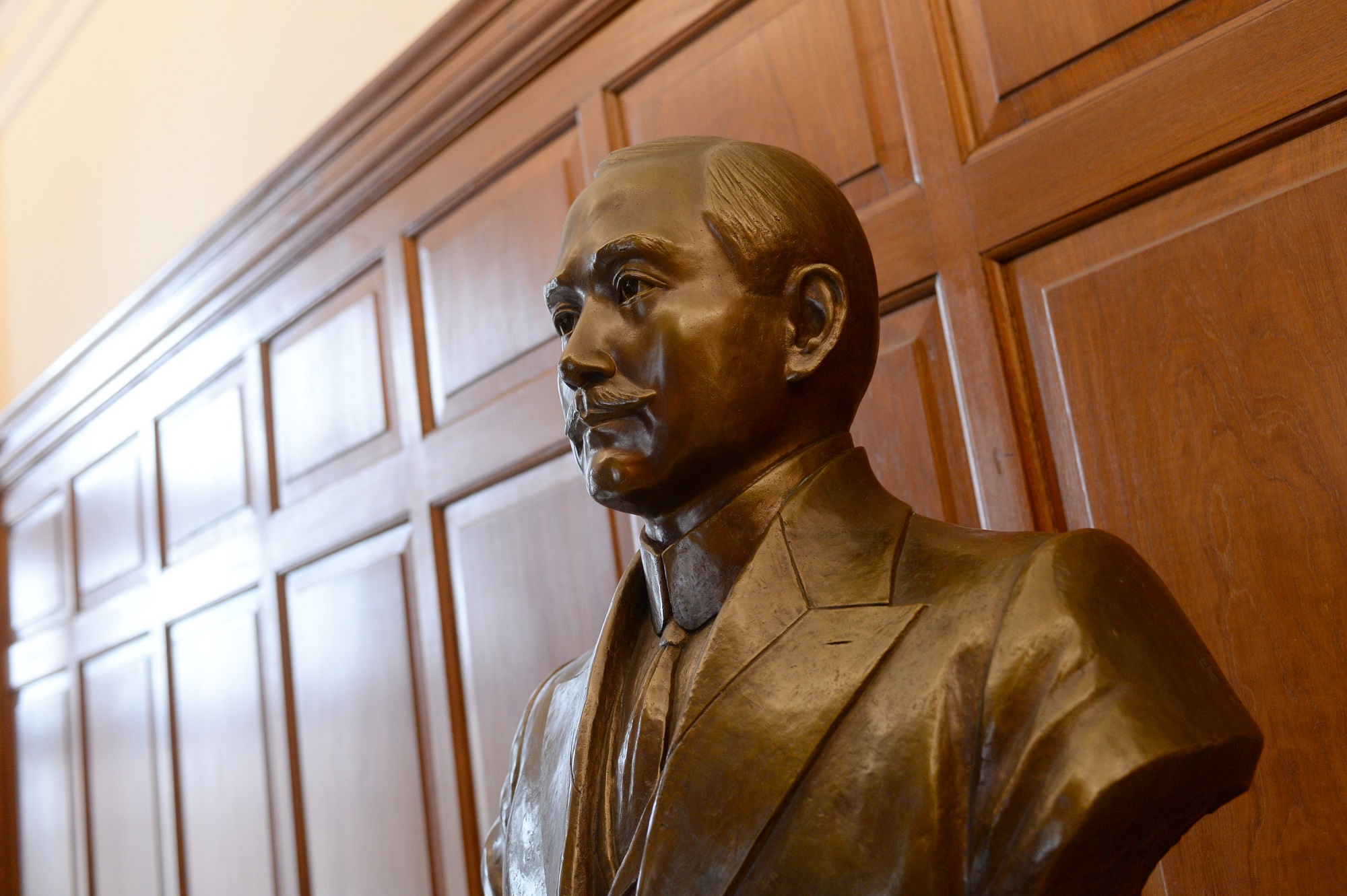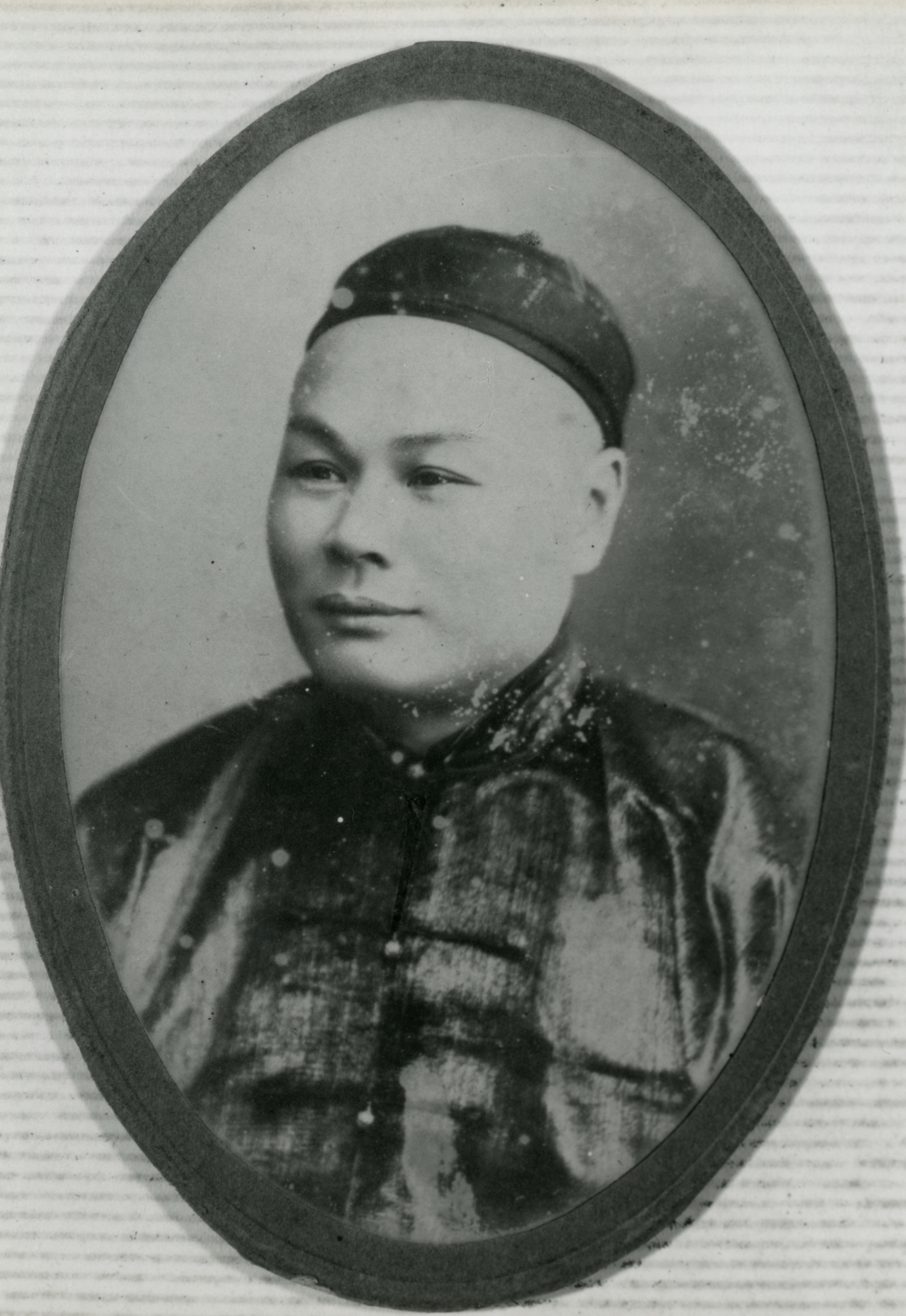
Ho Kom-tong (1866-1950). Ho Kom-tong, Sir Robert Ho Tung (1862-1956) and Ho Fook (1863-1926) were half-brothers. Ho Kom-tong was born in the same year as Dr Sun Yat-sen, and also attended Government Central School. He subsequently worked as a comprador in Jardine, Matheson & Co. Ltd.
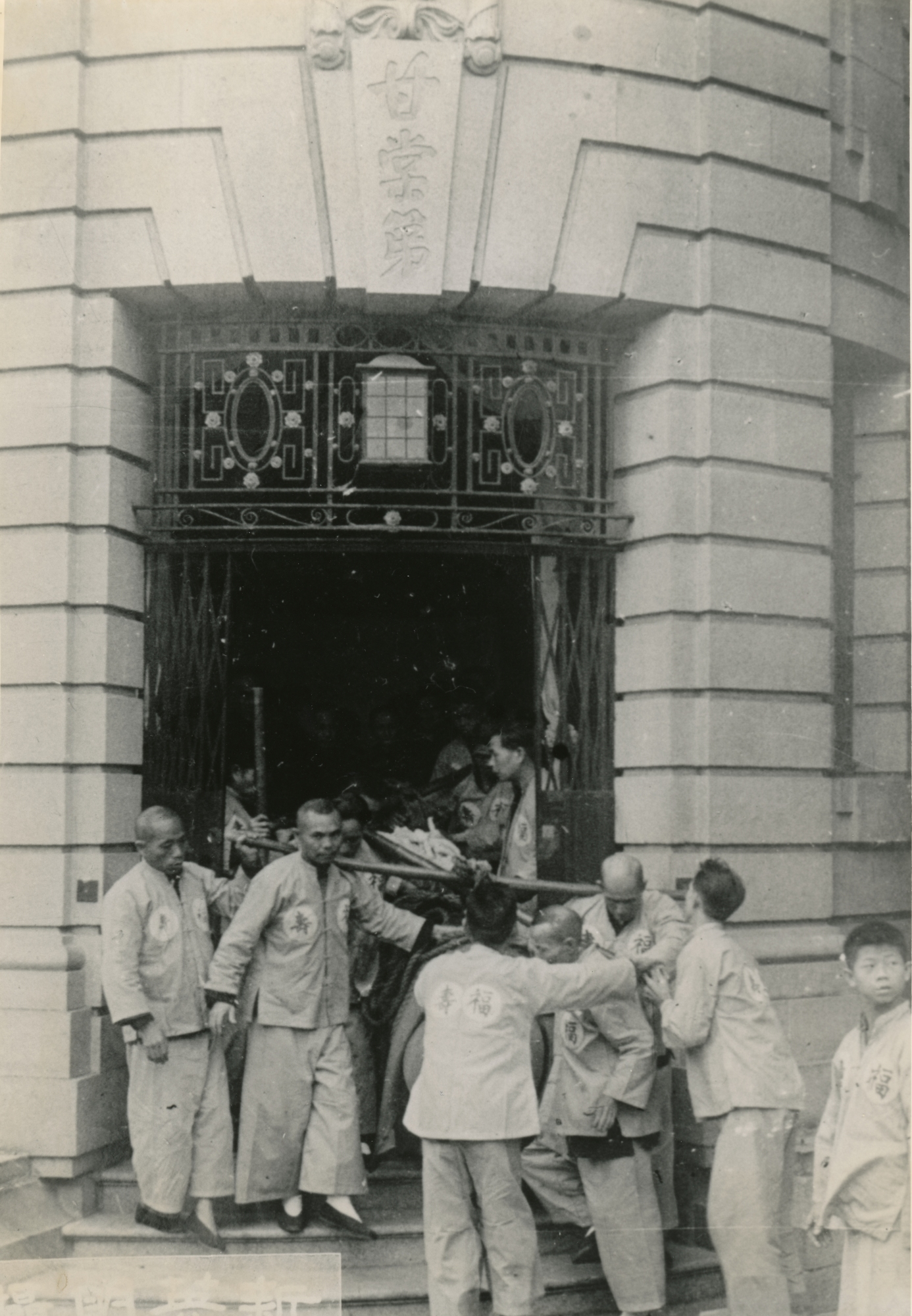
On the day of the funeral, pallbearers carry the coffin of Ho Kom-tong out of the main entrance of Kom Tong Hall to the hearse.
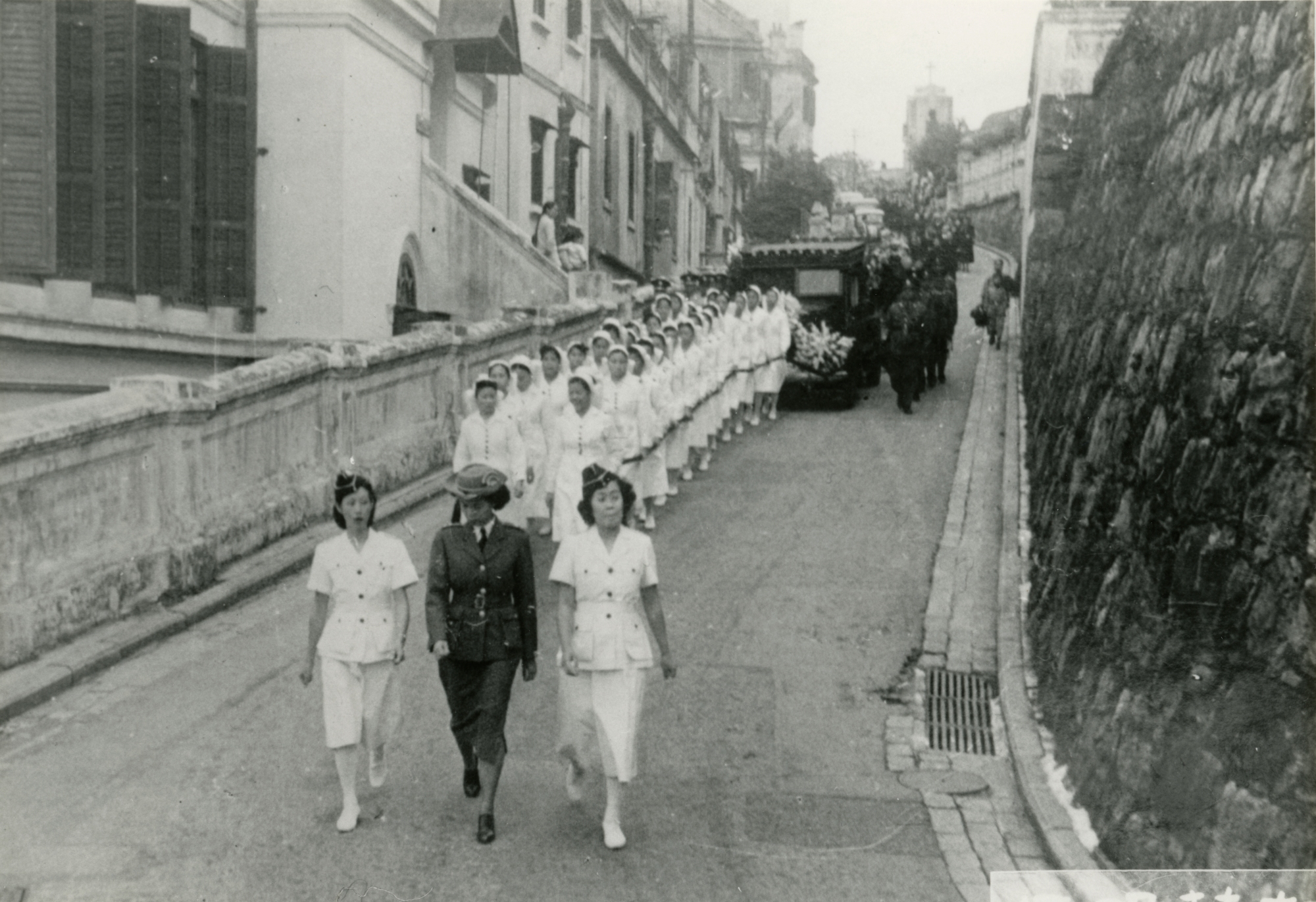
Nurses of the St. John Ambulance Brigade and the hearse move along Seymour Road. In 1915, Ho Kom-tong initiated the founding of the St. John Ambulance Brigade in Hong Kong. With funds donated by Ho, the Brigade was established in the following year.
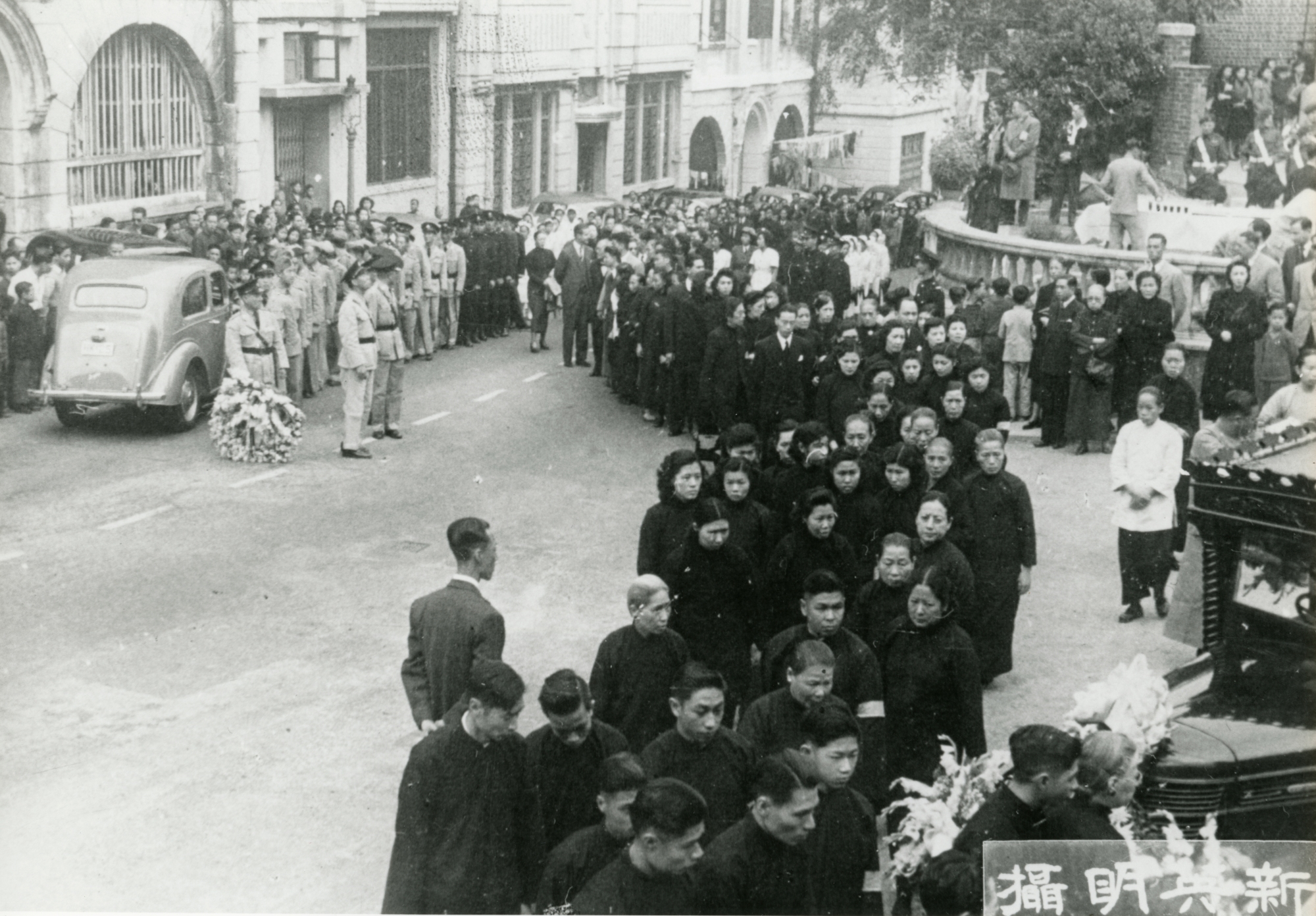
Members of the Ho family, dressed in black, escort Ho Kom-tong's coffin to The University of Hong Kong. In 1917, Ho made a donation to The University of Hong Kong's School of Tropical Medicine and Pathology for training and the construction of a teaching block.
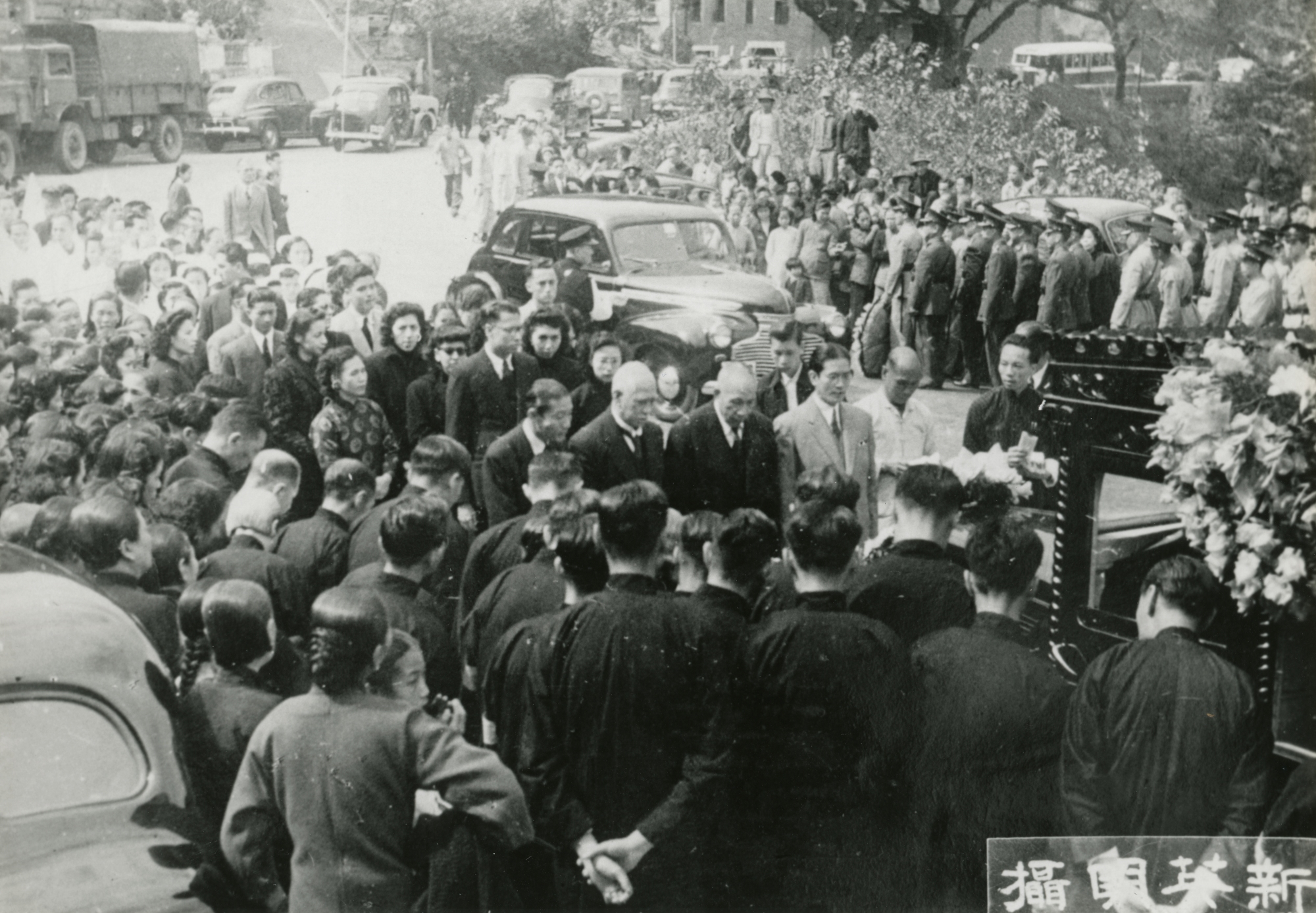
Family, friends and other members of the public bid a final farewell to Ho Kom-tong as the hearse is parked outside The University of Hong Kong.
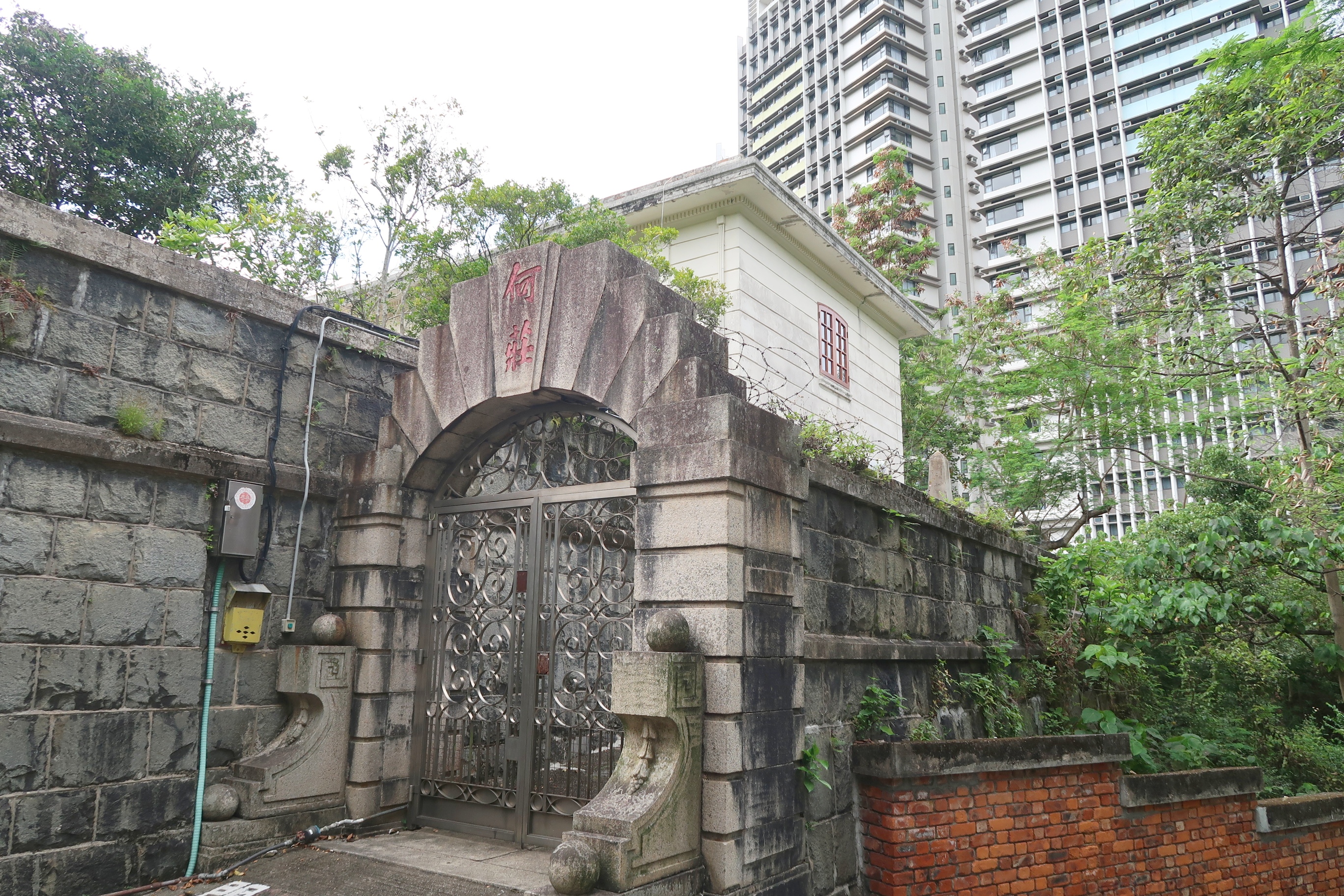
The main entrance gateway of Ho Chong features an architectural style similar to the main entrance of Kom Tong Hall. A firm believer of feng shui, Ho Kom-tong chose to build the family burial ground on the other side of the cemetery.
